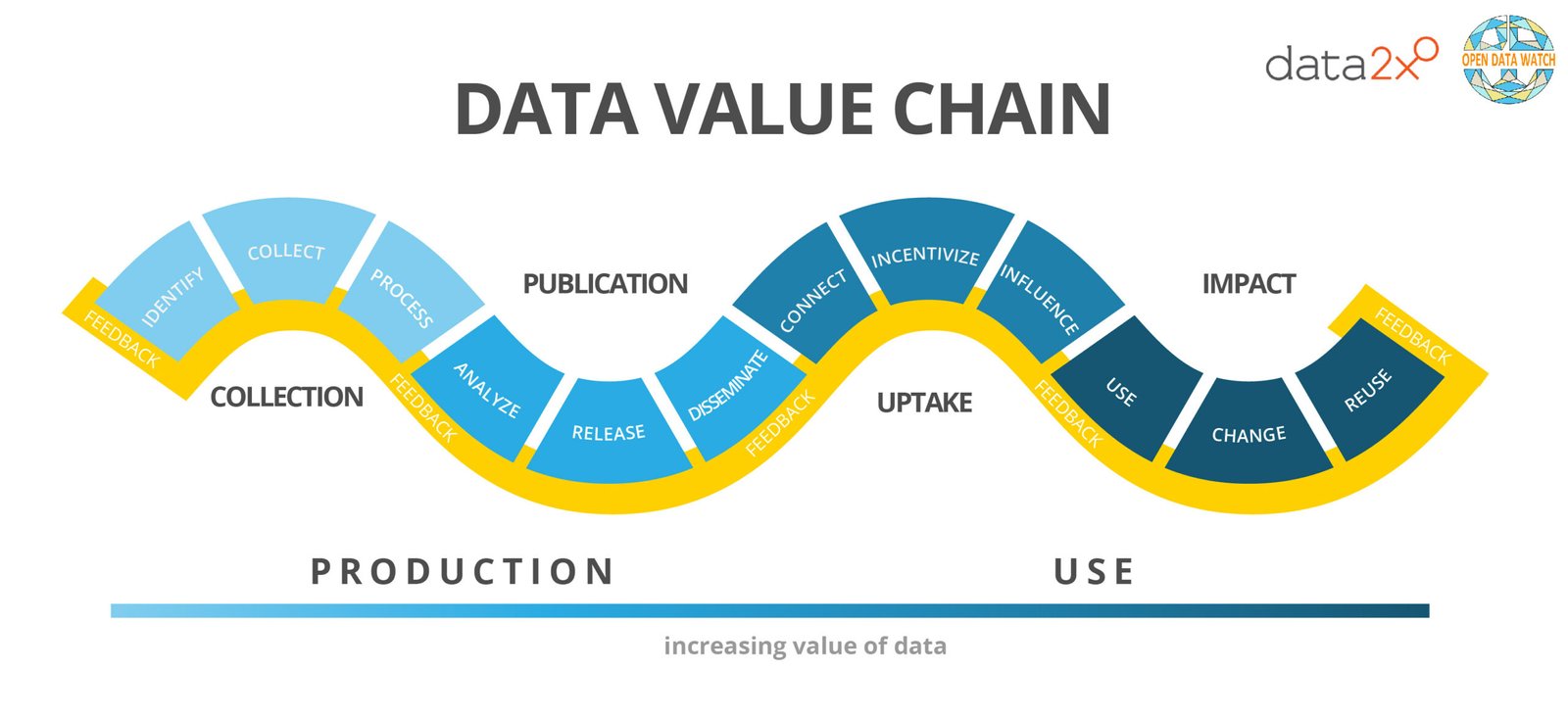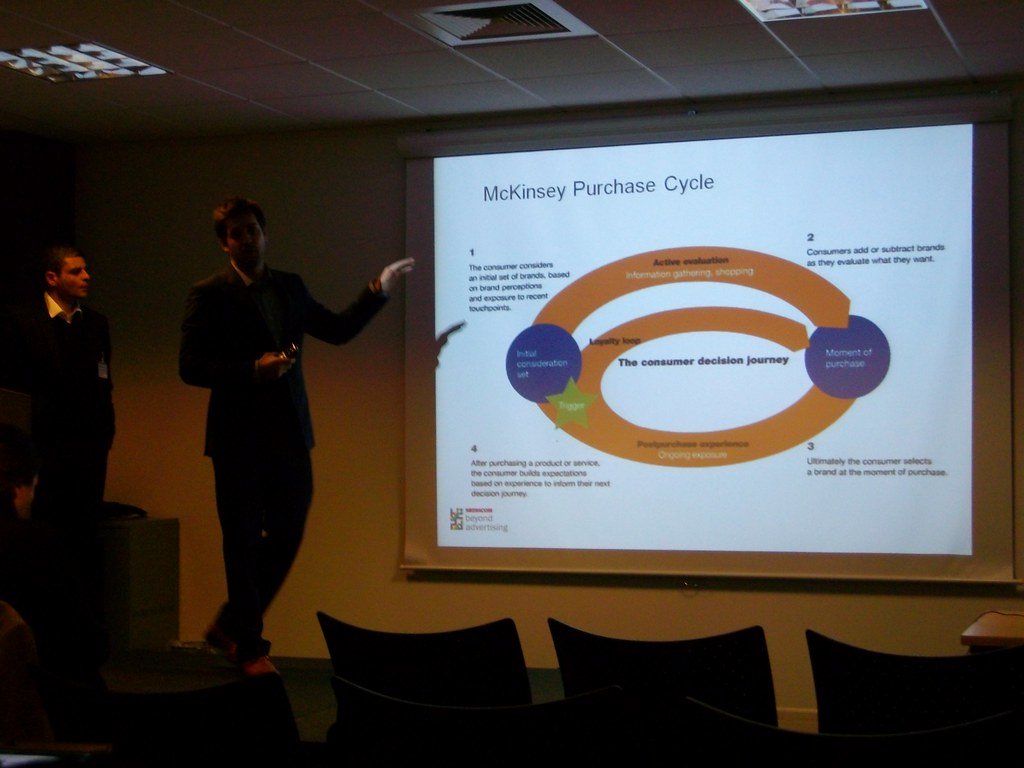Behind every online purchase we make, there is a treasure trove of data waiting to be untapped. It is the fuel that powers the revolution in online shopping – the art of personalized shopping. In this digital era, where algorithms paint a picture of who we are, what we want, and how we behave, retailers have harnessed the power of user data and analytics to redefine the shopping experience. No longer are we mere consumers, lost in the vast sea of options. Instead, we navigate a personalized ocean of choices, curated uniquely for us. In this article, we explore the art behind personalized shopping, diving deep into the world of user data and analytics, discovering how they unlock a realm of possibility for both buyers and sellers alike. So, strap in as we embark on a journey to unravel the secrets behind the art of personalized shopping!
Table of Contents
- 1. The Power of Personalized Shopping: Harnessing User Data for Enhanced Customer Experiences
- 2. Unveiling the Role of Analytics in Personalized Shopping: Insights, Trends, and Success Stories
- 3. From Data to Action: Unleashing the Potential of User Analytics to Optimize Online Shopping
- 4. Tailoring the Shopping Journey: Effective Strategies to Engage Customers through Personalization
- Q&A
- Insights and Conclusions

1. The Power of Personalized Shopping: Harnessing User Data for Enhanced Customer Experiences
Personalized shopping has become a game-changer in the retail industry, revolutionizing the way companies interact with their customers. By harnessing user data and leveraging the power of analytics, businesses can now offer enhanced customer experiences that cater to individual preferences and needs. Gone are the days of generic one-size-fits-all recommendations. Today, companies have the ability to create tailored shopping experiences that make customers feel understood and valued.
So, how exactly does personalized shopping work? It all starts with collecting and analyzing user data. Companies can gather information about customer behavior, preferences, and purchase history to gain valuable insights into individual shopping patterns. With this data in hand, businesses can then create personalized recommendations, customized offers, and targeted marketing campaigns. For example, a clothing retailer may use data to suggest outfits based on a customer’s previous purchases and style preferences. By understanding the individual’s unique tastes, the retailer can provide a curated shopping experience that saves the customer time and helps them discover new items they’ll love. This level of personalization not only boosts customer satisfaction but also increases the likelihood of repeat purchases and brand loyalty.

2. Unveiling the Role of Analytics in Personalized Shopping: Insights, Trends, and Success Stories
In today’s digital age, personalized shopping has become an integral part of our shopping experience. But have you ever wondered how these online retailers manage to curate such customized recommendations for you? The answer lies in the power of analytics.
Analytics, the systematic analysis of data, is revolutionizing the way businesses understand their customers’ preferences and behaviors. By analyzing user data, these retailers gain valuable insights into individual shopping patterns, allowing them to tailor their offerings to meet each customer’s specific needs and interests. For instance, through the analysis of past purchases, browsing history, and demographic information, retailers can recommend products that align with a customer’s taste, style, and budget.
The role of analytics in personalized shopping cannot be underestimated. It not only helps businesses provide a better shopping experience for their customers but also generates significant benefits for both parties involved. Let’s delve deeper into the insights, trends, and success stories that demonstrate the power of analytics in revolutionizing the art of personalized shopping:
– Enhanced Product Recommendations: Analytics enables retailers to go beyond generic suggestions by leveraging user browsing and purchasing history. For example, leading e-commerce platforms like Amazon use machine learning algorithms to predict what a customer is likely to buy next based on their past purchases or items in their shopping cart. These personalized recommendations increase the chances of a purchase and enhance customer satisfaction.
– Customized Marketing Campaigns: Analytics allows businesses to segment their customer base and create targeted marketing campaigns. By analyzing customer data, retailers can identify specific demographics, interests, and preferences, enabling them to tailor their messages to resonate with different customer segments. A classic example of this is how Spotify curates personalized playlists based on users’ music preferences and listening habits, making each user feel like the music was handpicked just for them.
3. From Data to Action: Unleashing the Potential of User Analytics to Optimize Online Shopping
In the fast-paced world of online shopping, understanding your customers’ needs and preferences is key to staying ahead of the competition. This is where user analytics comes into play. User analytics refers to the process of collecting and analyzing data about users’ interactions with a website or application. By harnessing the power of user analytics, businesses can gain valuable insights into their customers’ behavior, improve their online shopping experience, and ultimately boost sales.
So, how exactly can user analytics unleash the potential of online shopping? Let’s delve into a few ways:
- Understanding customer journey: User analytics allows businesses to track their customers’ journey from the moment they land on their website to the point of purchase. By analyzing user behavior, such as which pages they visit, how long they spend on each page, and where they drop off, businesses can identify pain points and optimize their website for a seamless shopping experience.
- Personalizing the shopping experience: User analytics provides businesses with the opportunity to create personalized shopping experiences for their customers. By analyzing users’ preferences, purchase history, and browsing habits, online retailers can tailor product recommendations, offer personalized discounts, and create targeted marketing campaigns. This personalized approach not only enhances customer satisfaction but also boosts sales and customer loyalty.
- Optimizing product offerings: User analytics allows businesses to gain insights into which products are popular among their customers and which ones are not performing well. By analyzing purchase patterns and user feedback, businesses can make data-driven decisions about their product portfolio, identify gaps in the market, and optimize their offerings to meet customer demands.
User analytics is a powerful tool that can transform online shopping from a one-size-fits-all experience to a personalized and seamless journey. By using data to understand and cater to their customers’ needs, businesses can optimize their online platforms, strengthen customer relationships, and maximize their bottom line.

4. Tailoring the Shopping Journey: Effective Strategies to Engage Customers through Personalization
In today’s competitive retail landscape, the power of personalization cannot be underestimated. Tailoring the shopping journey to engage customers on an individual level is essential for businesses aiming to drive sales and build brand loyalty. So, how can you effectively implement strategies that maximize personalization? Let’s explore some top tactics that will help you harness the potential of user data and analytics!
1. Segment customers based on preferences: By analyzing the vast amount of user data available, you can categorize your customers into different segments based on their interests, purchase history, and browsing behavior. This segmentation allows you to tailor marketing messages, offers, and product recommendations to each specific group, delivering a more personalized shopping experience.
2. Dynamic content based on user behavior: Leveraging real-time analytics, you can dynamically display content that is most relevant to each customer’s current needs and interests. For example, an online clothing store can showcase items similar to those a customer has previously viewed or purchased. By doing so, you create a sense of individualized attention, making the customer feel valued and understood.
3. Personalized recommendations: Utilizing machine learning algorithms, you can provide customers with personalized product recommendations based on their past purchases, browsing history, and even wishlist items. This approach allows you to show customers items they are most likely to be interested in, increasing the chances of conversion and customer satisfaction.
4. Customizable shopping experiences: Give your customers the freedom to customize their shopping journey. Provide options like saved preferences, personalized landing pages, and the ability to create wishlists. By allowing customers to tailor their experience to their own liking, you create a sense of empowerment, making them more likely to come back for future purchases.
Remember, personalization is an ongoing process that relies on continuously collecting and analyzing user data. By investing in the art of personalized shopping, you can truly unleash the power of user data and analytics, creating a unique and tailored experience that keeps customers coming back for more.
Q&A
Q: What is personalized shopping and why is it considered an art form?
A: Personalized shopping is a practice that utilizes user data and analytics to create unique and tailored shopping experiences for individuals. It is considered an art form because it involves combining creativity, technology, and understanding of consumer behavior to deliver highly personalized recommendations and recommendations.
Q: How does personalized shopping work?
A: Personalized shopping works by analyzing the data collected from users’ browsing habits, purchase history, preferences, and other relevant information. This data is then used to create personalized recommendations, curated product suggestions, targeted promotions, and even individualized shopping experiences.
Q: What role does user data play in personalized shopping?
A: User data is the foundation of personalized shopping. It allows retailers to gain insights into customers’ preferences, interests, and shopping behaviors. By leveraging this data, retailers can create a more tailored experience that aligns with the individual’s needs and desires.
Q: Is personalized shopping an invasion of privacy?
A: Personalized shopping can raise concerns of privacy, but it is essential to note that retailers and e-commerce platforms adhere to strict privacy regulations and ensure that personal data is handled securely. Moreover, users often have the option to control their privacy settings and choose whether or not they want to share certain information.
Q: What are the benefits of personalized shopping for consumers?
A: Personalized shopping offers numerous benefits for consumers. It saves time by eliminating the need to sort through irrelevant products, provides tailored recommendations based on individual preferences, and enhances the overall shopping experience by making it more intuitive and enjoyable.
Q: How does personalized shopping benefit retailers?
A: Personalized shopping empowers retailers to build stronger customer relationships, boost customer loyalty, and increase sales. By understanding consumers on a deeper level, retailers can feature products that are more likely to resonate with their customers, leading to higher conversion rates and customer satisfaction.
Q: Can personalized shopping lead to online shopping addiction?
A: While personalized shopping can enhance the online shopping experience, the responsibility of managing one’s shopping habits ultimately rests with the individual. As long as users maintain a healthy balance between online and offline activities, personalized shopping is not inherently addictive.
Q: How can retailers ensure they are practicing ethical personalized shopping?
A: Retailers can ensure ethical personalized shopping by being transparent about data collection practices, providing clear privacy policies, and giving consumers control over their data. Furthermore, they should prioritize the security of users’ personal information and avoid any discriminatory practices that may arise from misinterpreted data analytics.
Q: Are there any limitations to personalized shopping?
A: Personalized shopping still faces some limitations, such as the accuracy of data analysis and the occasional inability to fully understand an individual’s preferences due to changing tastes or outside factors. Additionally, some users may find personalized recommendations intrusive, and striking a balance between personalization and privacy is an ongoing challenge.
Q: What does the future hold for personalized shopping?
A: The future of personalized shopping looks promising, with advancements in machine learning and artificial intelligence. As technology continues to evolve, personalized shopping experiences will become even more intuitive, accurate, and immersive, ultimately revolutionizing the way consumers interact with brands and make purchasing decisions.
Insights and Conclusions
In a world where data reigns supreme, personalized shopping has emerged as a powerful force, revolutionizing the way we shop and unlocking endless possibilities. By harnessing the vast amounts of user data and leveraging the power of analytics, retailers have mastered the art of understanding and catering to individual needs and desires like never before.
Through meticulously curated recommendations and tailored shopping experiences, personalized shopping has transcended mere convenience to become an art form in its own right. As we bid farewell to generic shopping platforms, we welcome a new era where every interaction is a personalized masterpiece.
Unleashing user data and analytics has allowed retailers to delve into the deepest corners of our preferences and habits. From meticulously analyzing browsing history to deciphering buying patterns, every piece of information is meticulously gathered and analyzed, providing valuable insights into what makes each shopper tick. Armed with this knowledge, retailers can present us with the perfect products, promotions, and experiences, creating a shopping journey that feels like it was designed just for us.
But the true beauty of personalized shopping lies in its ability to surprise and delight. It goes beyond the simple act of predicting our next purchase; it anticipates our desires, understands our cravings, and leaves us in awe of its accuracy. It’s a portal that takes us on a mesmerizing journey, unveiling hidden gems and introducing us to new possibilities, all tailored to our unique tastes.
While some may raise concerns about privacy and data security, it’s important to recognize the delicate balance between personalization and intrusion. Today’s retailers understand the importance of building trust and safeguarding customer information. Personalized shopping is a dance, where both parties willingly participate, allowing retailers to better serve our needs while respecting our boundaries.
In this brave new world of personalized shopping, the boundaries between online and offline blur. With every click, swipe, or step we take, we leave a digital footprint that retailers skillfully interpret. We’re no longer just shoppers; we become co-creators, shaping the shopping experience together. Our data becomes not just a bunch of numbers on a screen, but a canvas on which retailers paint masterpieces of personalized shopping.
As we embark on this journey through the realm of personalized shopping, we find ourselves standing at the intersection of technology and human desires. It is a testament to our evolving society, where the fusion of data and analytics with artistic intuition has created a shopping experience that is as unique and diverse as humanity itself.
So, embrace the art of personalized shopping, where every pixel, every algorithm, and every interaction is infused with creativity. Allow yourself to be captivated by a world that revolves around you, and revel in the joy of discovering the perfect purchase. It’s time to step into the future of shopping, where the canvas of personalized experiences awaits, eager to delight, inspire, and leave you wanting more.

